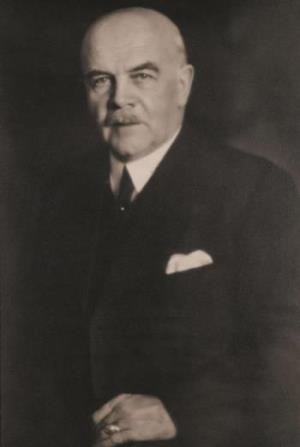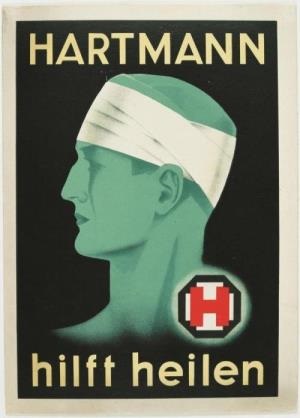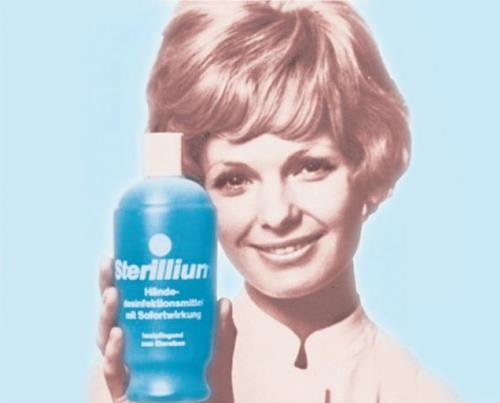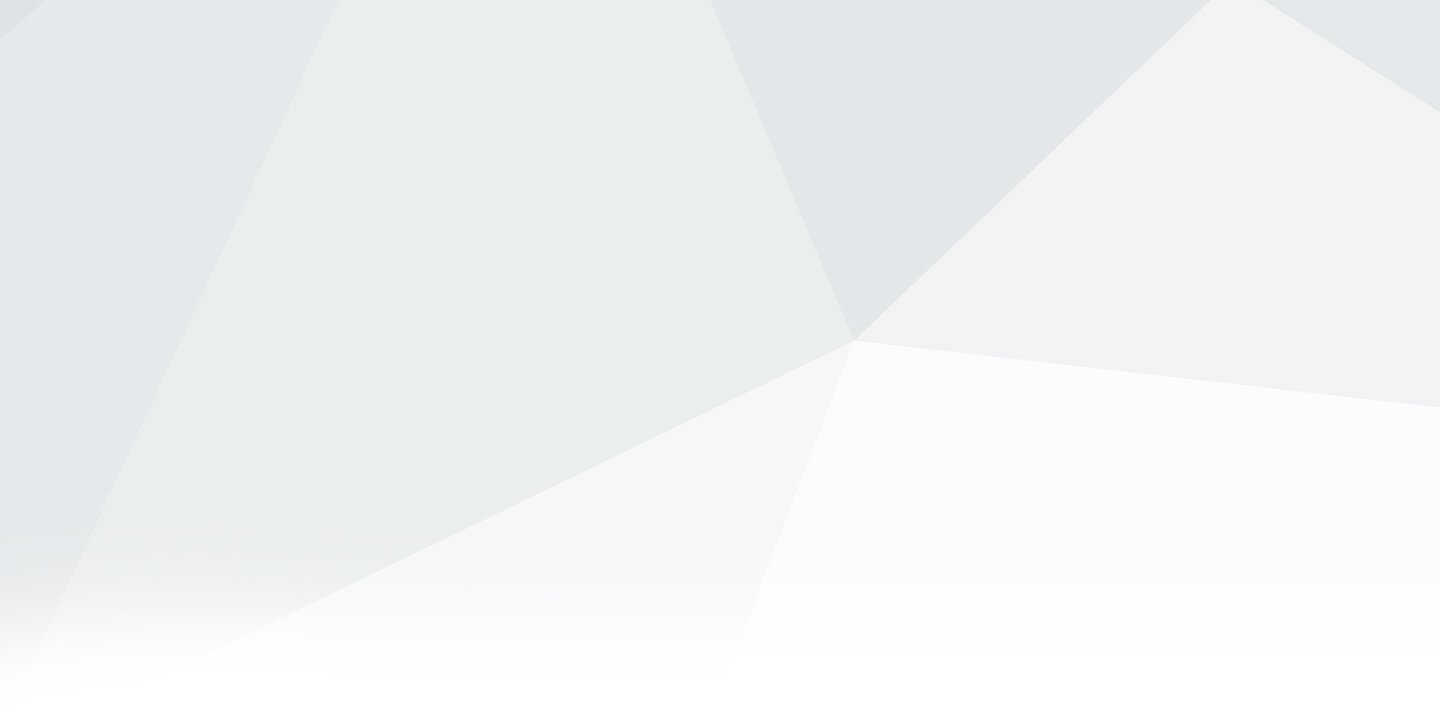After losing its locations outside Germany due to the Second World War, the PAUL HARTMANN company eschewed foreign investments for quite some time. That only changed in 1972 with the founding of HARTMANN-FRANCE S.A. Today, the Group is represented in more than 30 countries. Part three of the company's history – from 1945 to the present.

1945 was Germany's "Zero Hour" – not least for the PAUL HARTMANN company. Its employees set to work, energetically supported by many of the 14,000 refugees from Eastern Europe who had made Heidenheim their new home. Major changes took place in the company's management. The company head and general manager, Walter Hartmann, died in 1944 and that led to a rethink in the family and gradual withdrawal, while external managers rose in significance. On 1st July 1945, Günther Klüsmann was appointed deputy member of the Management Board, and in 1946 became a full member.
Sales of HARTMANN products were sluggish during these years. In times of hunger there was simply no money to buy them. This gradual change only started following the 1948 currency reform. 1948 also saw another shift at the top: an engineer, Gerhard Marx, was appointed deputy member of the Management Board and in 1950 he became a full member. Yet one thing stayed the same as ever: the company was open to innovations and viewed them as opportunity. Thus in 1950, a Hollerith machine was deployed in Heidenheim. This was a punch card system that stored numerical information by making holes in specific fields on the cards.
Disposable nappies become a best-seller
1956 saw expansion in the production of milk filters, and the adhesive bandage department was enlarged. In addition, HARTMANN was connected to a solvent recovery system. All this paid off, with sales exceeding 50 million Deutschmarks in 1963 for the first time. The next major innovation was soon to come: single-use nappies that could be easily disposed of afterwards. They increasingly replaced the then common cloth nappies, which required laborious laundering each time. The first machine for producing disposable nappies was installed at HARTMANN in Heidenheim in 1964.
Here again, the company reached a milestone. HARTMANN continued producing the Fixies nappy brand until 2005. In 1965, Heinrich Holch took over chairmanship of the Supervisory Board, and that same year the company actively entered the consumer goods sector. Wet wipes and cotton swabs, for example, entered the product range and became available in regular retail stores. As a result, company strategy shifted away from being a traditional medical products manufacturer.
"HARTMANN helps healing"
In order to make hostile takeovers more difficult, the shareholders of PAUL HARTMANN AG, which had been in existence since 1912, formed a protection association. This circle, established in 1964, created a stable economic foundation for the company. The appointment of Friedrich-Wilhelm von Seydlitz-Kurzbach to the Commercial Board in 1968 marked the entry of another breed of manager. For example, he turned focus toward modern marketing and revived the popular advertising slogan "HARTMANN helps healing".
Under Seydlitz-Kurzbach, sales expectations also increased – and were effectively realised, with a first for sales of more than 100 million Deutschmarks in 1970. Yet the company's success was almost exclusively focused on Germany; exports were next to nothing. Nor did the company have any plants or subsidiaries abroad. After the experiences of the Second World War, which resulted in HARTMANN losing all its foreign locations, the company hesitated to invest outside of Germany – not least because of the uncertain political situation in Europe.

Entering the incontinence market
It was not until 1972 that HARTMANN made its first foreign investment by founding HARTMANN-FRANCE S.A. in the Alsace town of Chatenois. Over the years and decades that followed, additional subsidiaries and plants were established in France and elsewhere. By 1993, the company had followed suit in countries including Belgium, the Netherlands, Austria, Great Britain, Italy, Spain, the Czech Republic and Portugal. There were also investments in Saudi Arabia and Turkey. The year 1974 saw the manufacturing start of products for risk prevention during operations, as well as incontinence care items – the latter of which was a particularly forward-looking strategic decision. Starting from scratch, the company built up production facilities and its own sales team. Today, incontinence is the Group's top-selling sector.
Albrecht Hartmann was the last family member of the company board to die, in 1977. In 1983, sales by the HARTMANN GROUP exceeded 500 million Deutschmarks for the first time and rose to over one billion in 1990. Over the years, products have been refined and the range extended. Modern clinical thermometers developed in the 1980s and incontinence briefs that are worn like normal underpants are just two examples. The company expanded increasingly into Eastern European markets in the 1990s, with Russia being added in 1997.

Focusing on acquisitions
From 2000 onwards, HARTMANN focused heavily on acquisitions. 2000 saw the acquisition of Karl Otto Braun GmbH & Co. KG – a specialist in bandages and wovens for venology and lymphology, as well as for sports medicine, orthopaedics and wound care. In 2001, 80 percent of Kneipp was acquired before HARTMANN wholly absorbed the specialist for body care and bath products, pharmaceuticals and dietary supplements in 2008. Sanimed has been another subsidiary of HARTMANN since 2001, as a company whose manufacturing portfolio includes products for ambulatory patient care. In 2009, BODE Chemie GmbH with its Sterillium brand also became part of the Group. This acquisition has enabled HARTMANN to provide a first-hand offering of system solutions for protecting against infections.
Today, PAUL HARTMANN AG is represented in more than 35 countries on all continents, with over 10,700 employees. In 2016, the company generated sales revenue of almost two billion Euros. From its beginnings, the Group has been a driving force in advancing the health care industry worldwide. From the start, HARTMANN’s core distinguishable strength has been its proximity and partnerships with customers, the professional nursing field and patients. Together we continue to develop solutions that sustainably enhance the quality of medical treatment and create measurable added value for healthcare workers and patients alike – on the one hand through the easier applicability of products and systems, but also through their positive economic effect. PAUL HARTMANN AG and its employees, who form the basis of its success, will continue pursuing this path into the future.
Today, PAUL HARTMANN AG is represented in more than 35 countries on all continents, with over 10,700 employees. In 2016, the company generated sales revenue of almost two billion Euros. From its beginnings, the Group has been a driving force in advancing the health care industry worldwide. From the start, HARTMANN’s core distinguishable strength has been its proximity and partnerships with customers, the professional nursing field and patients. Together we continue to develop solutions that sustainably enhance the quality of medical treatment and create measurable added value for healthcare workers and patients alike – on the one hand through the easier applicability of products and systems, but also through their positive economic effect. PAUL HARTMANN AG and its employees, who form the basis of its success, will continue pursuing this path into the future.
